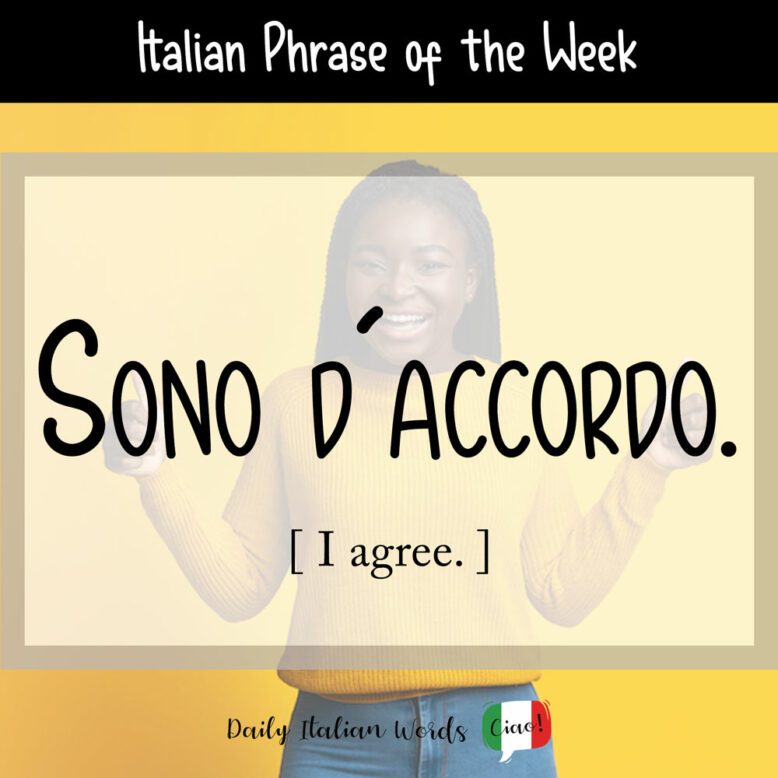If you want to say that you agree with someone’s opinion, there is a simple phrase you can use in Italian:
Sono d’accordo.
I agree.

The literal translation of this phrase is actually “I am in agreement“.
“Sono” means “I am” in Italian. It can also be written as “io sono” with “io” meaning “I” but subject pronouns in Italian are usually excluded. This is because the conjugation of the verb clearly reveals who is speaking.
The noun accordo translates as agreement, harmony, accord, understanding, and in musical terms, chord. Preceded by the preposition di (of/in), it becomes d’accordo (in agreement / agreed).
Sono d’accordo con te.
I agree with you.

If you want to say that you don’t agree with someone, simply place the negative adverb non at the beginning of the sentence.
Non sono d’accordo.
I don’t agree.
You can also turn this phrase into a question to seek approval from the other person. In this case, you will use the second person of the verb essere (sei = you are). If you’re addressing someone formally, you’ll use the third person with the pronoun Lei (with a capital L).
Sei d’accordo?
Lei è d’accordo?
Do you agree?
Do you agree (sir)?
An alternative verb you can use with this phase, instead of essere, is trovare. It means to find, and in this case you will use it with the indirect object pronoun mi (which literally means to me).
Su questo punto, mi trovi d’accordo .
On this point, I agree with you.
Lit. On this point, you find me to agree with you.

Some other well-known expressions in which accordo appears include:
- andare d’accordo = to get along
- (andare) d’amore e d’accordo = peace and harmony, (to get along) swimmingly
- in accordo con = in agreement with
- mettersi d’accordo = to make arrangements, to agree to do something
Heather Broster is a graduate with honours in linguistics from the University of Western Ontario. She is an aspiring polyglot, proficient in English and Italian, as well as Japanese, Welsh, and French to varying degrees of fluency. Originally from Toronto, Heather has resided in various countries, notably Italy for a period of six years. Her primary focus lies in the fields of language acquisition, education, and bilingual instruction.


